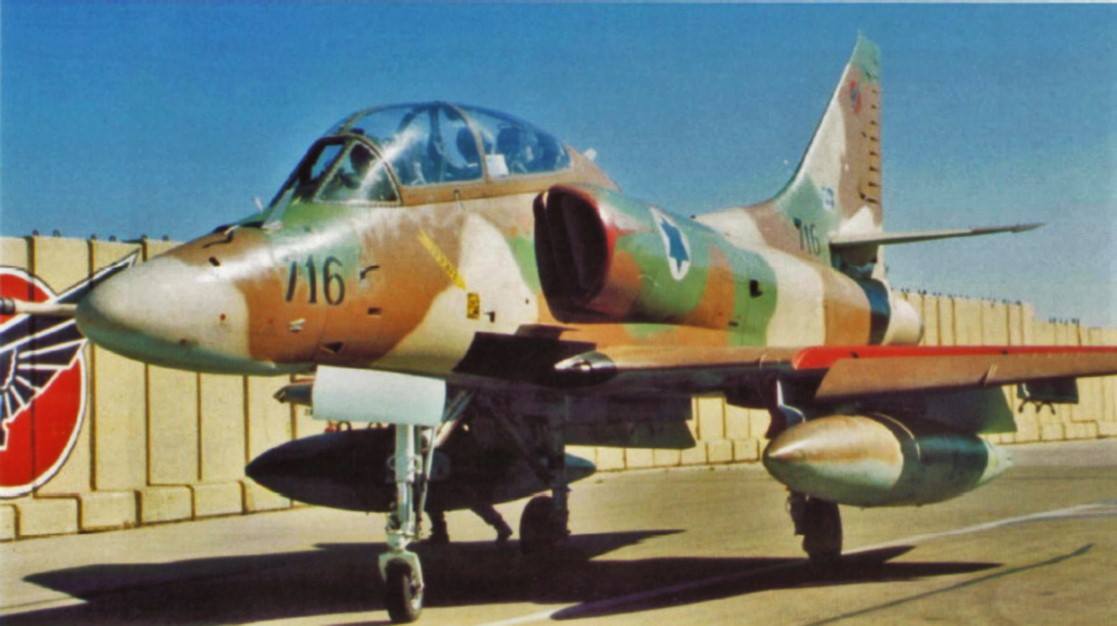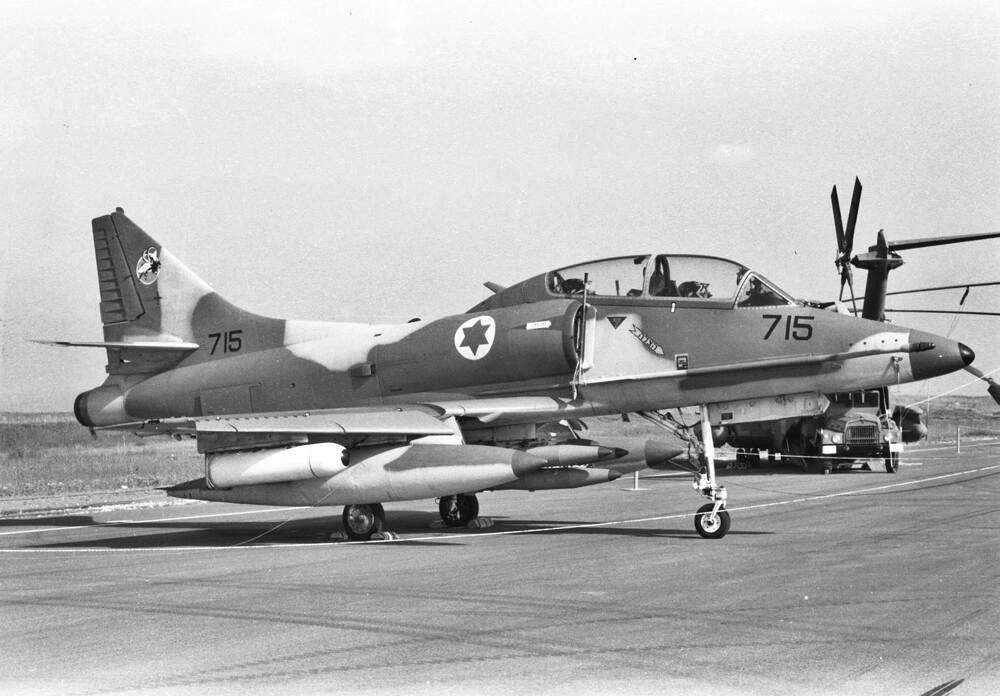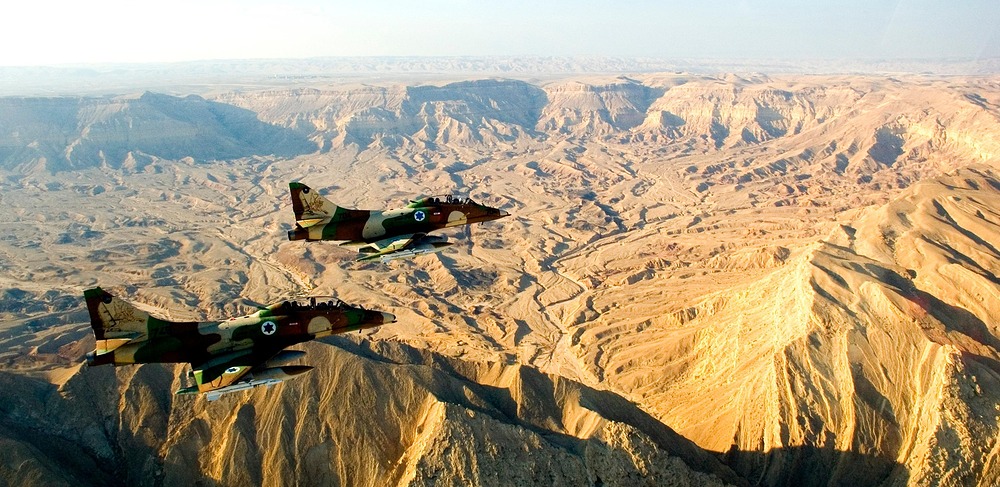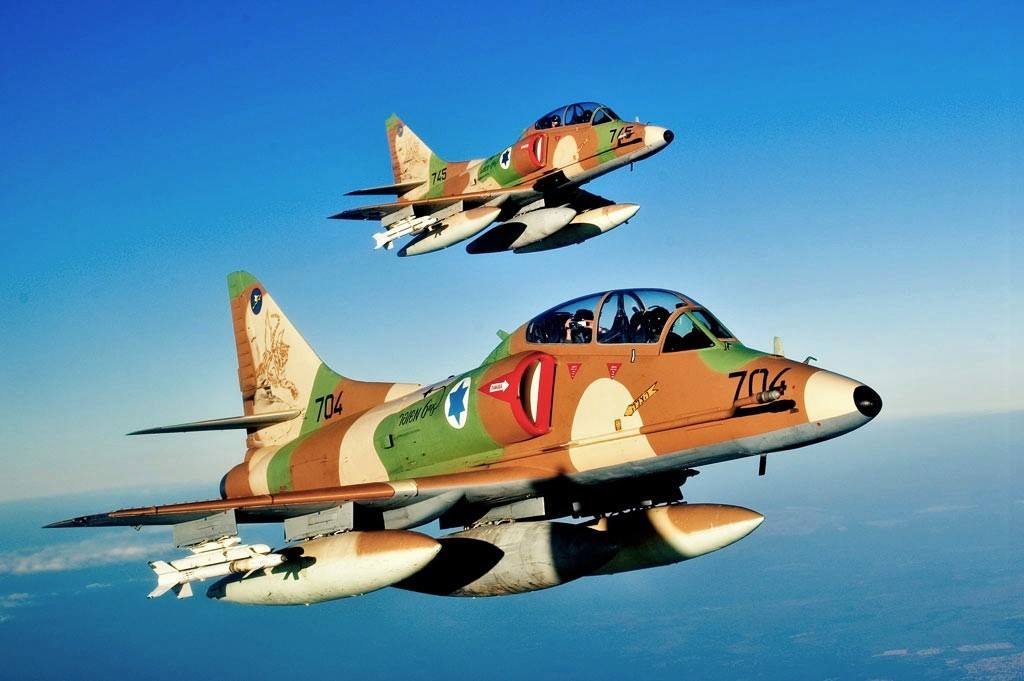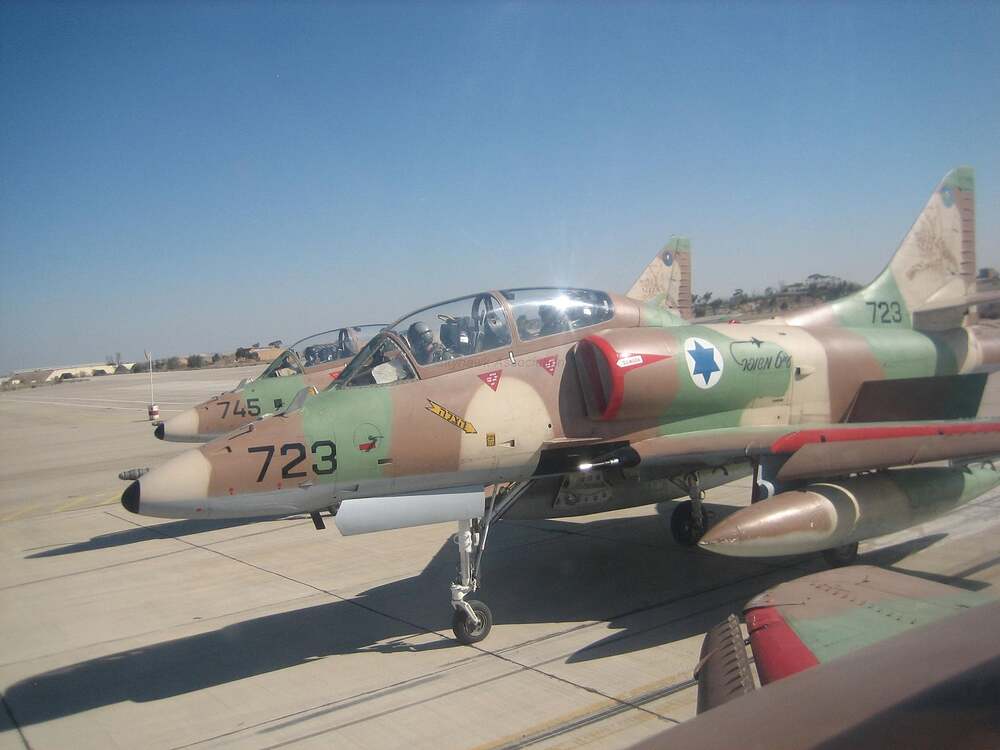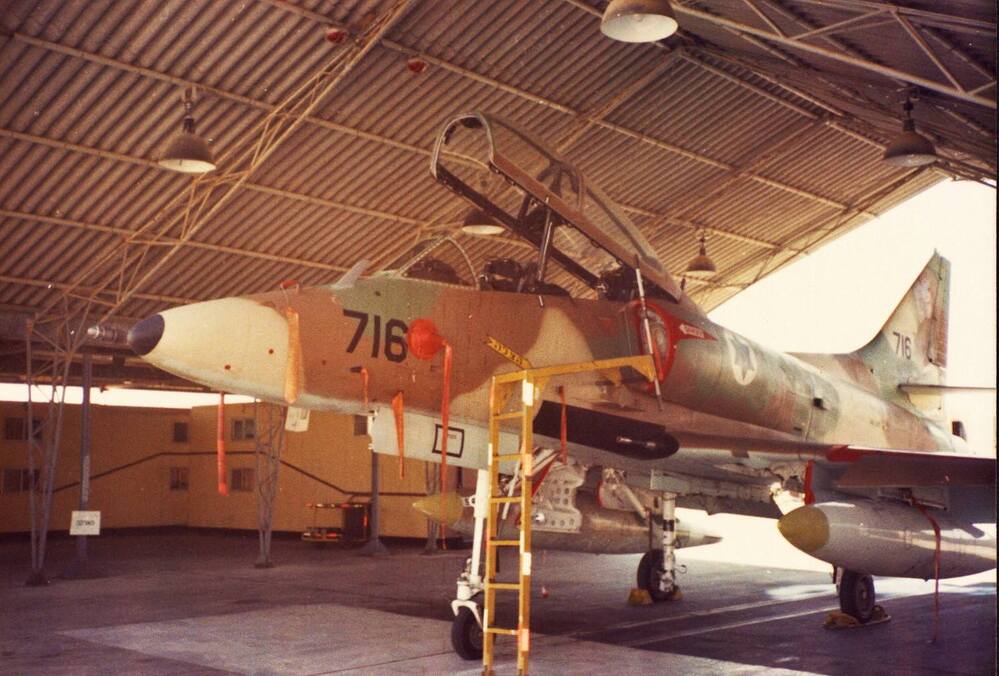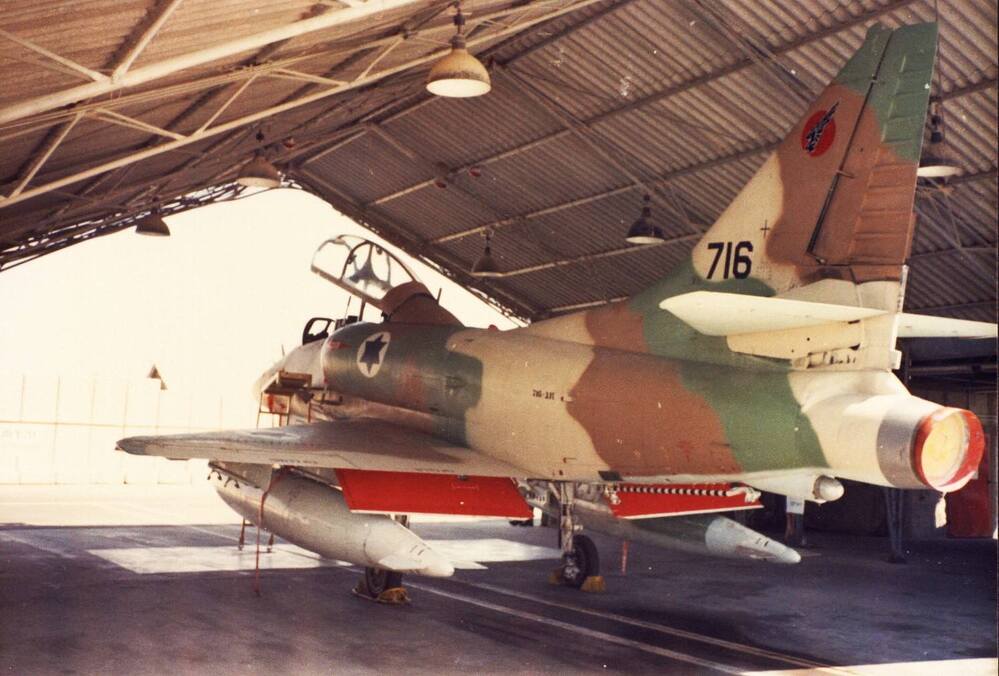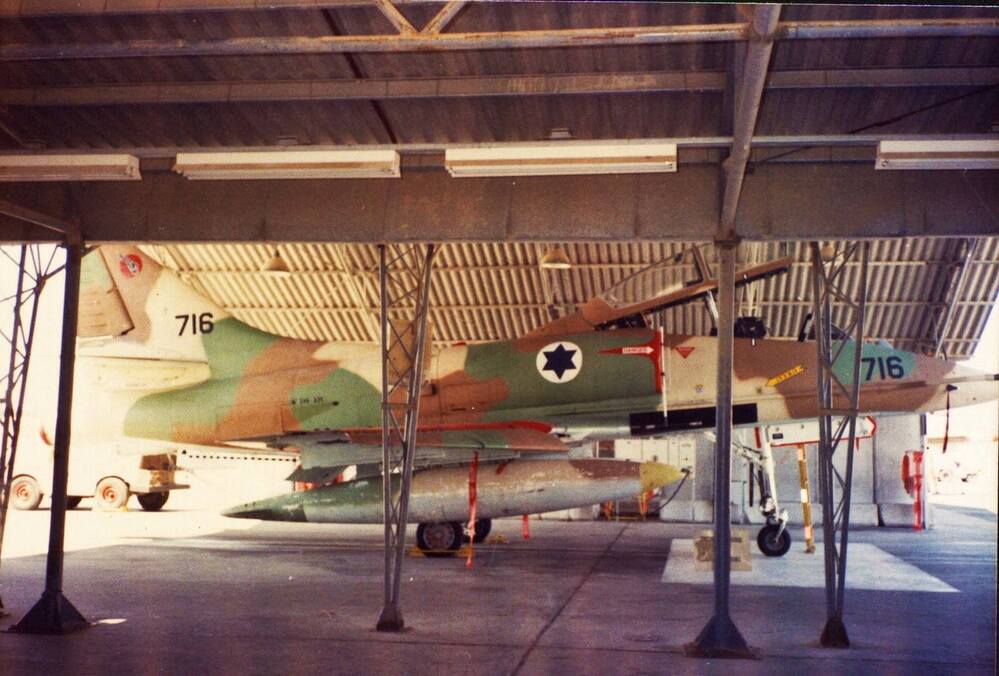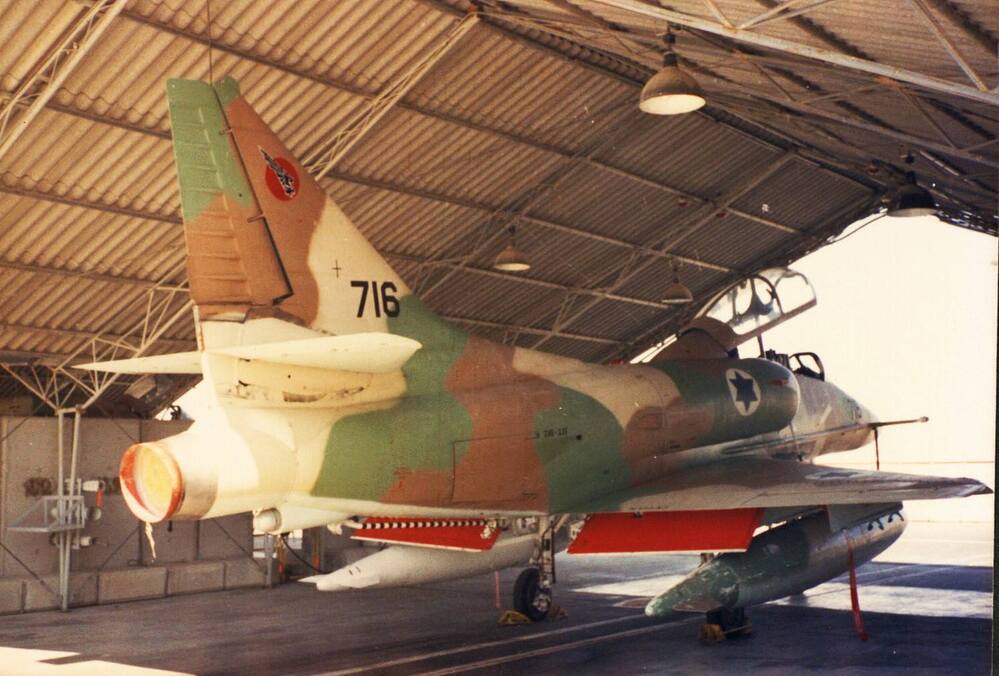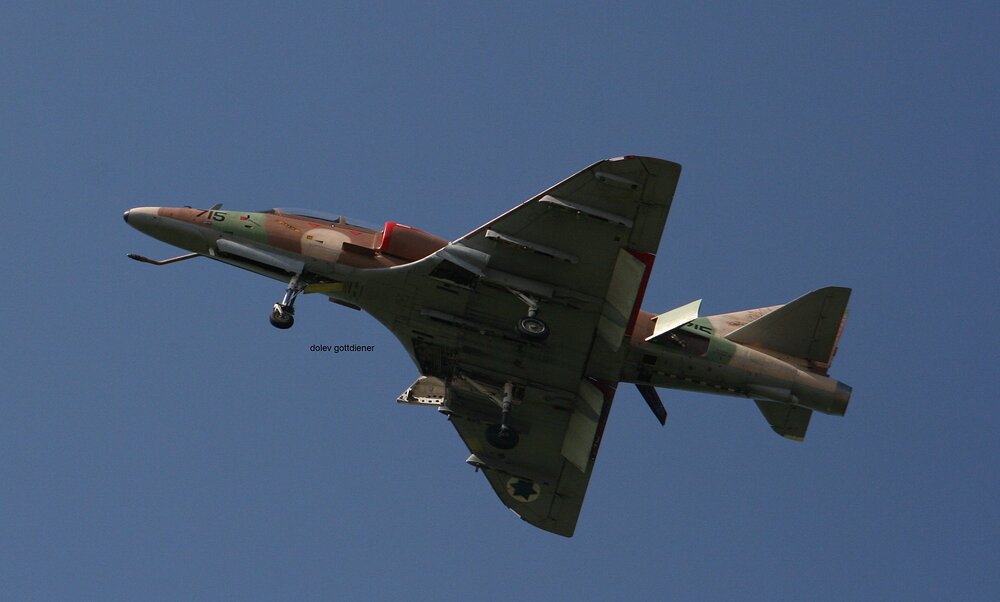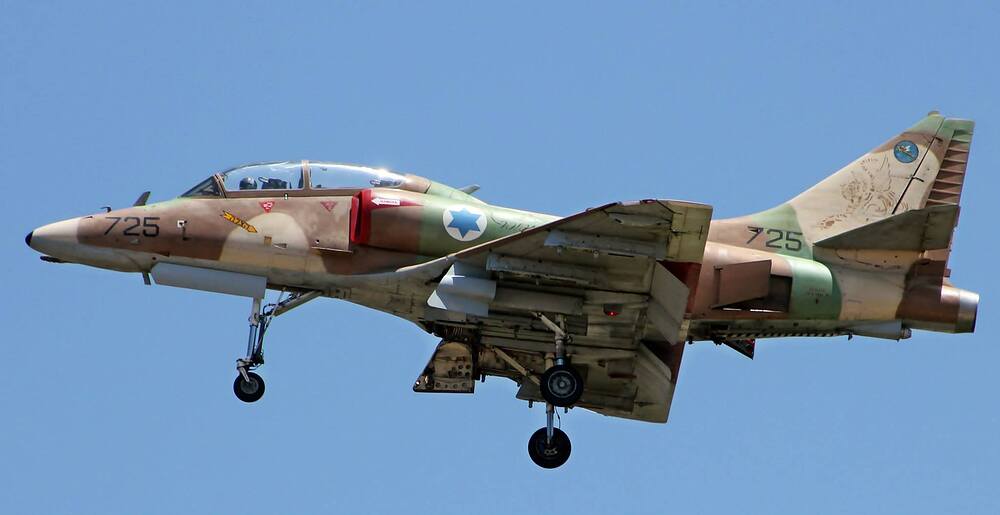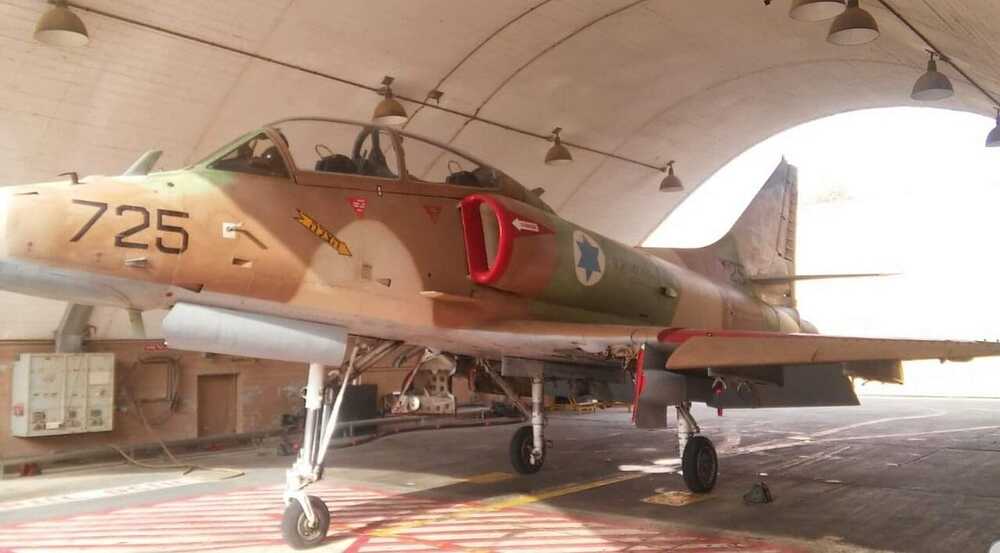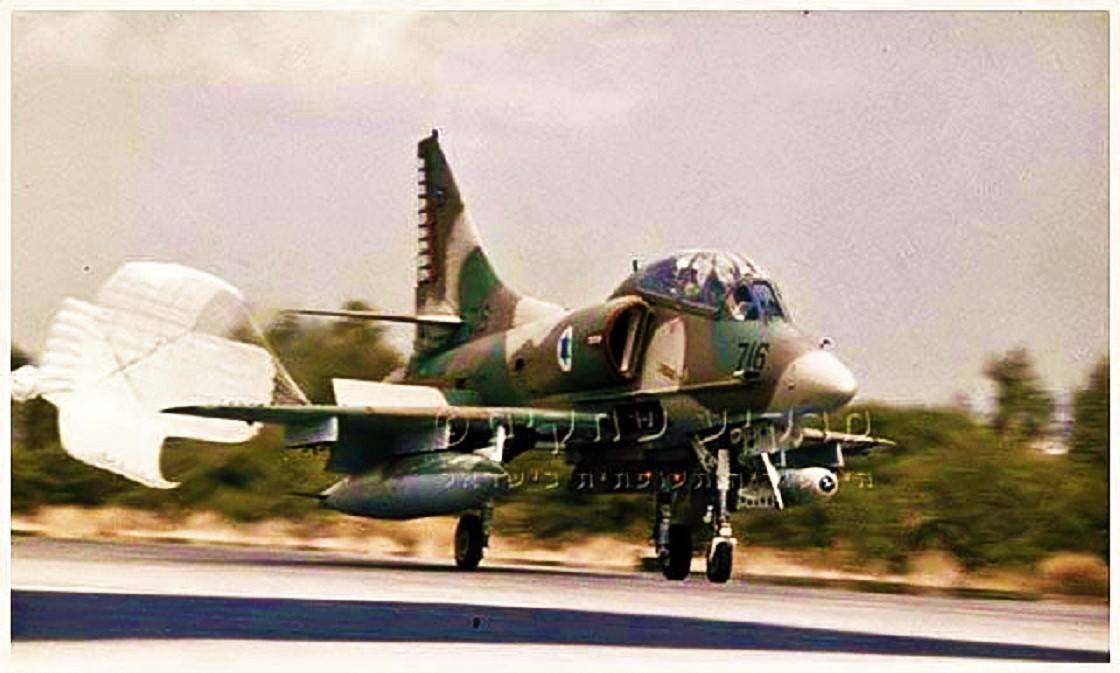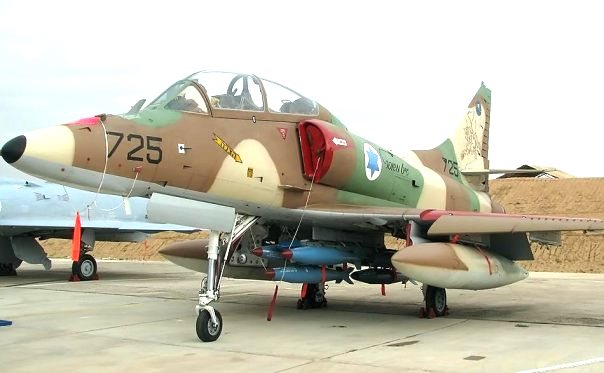- Yes
- No

Introduction
The Douglas TA-4J(H) Skyhawk was a limited production variant of the two seater TA-4J variant used for advanced flight training. The TA-4J(H) was essentially a hybrid of the TA-4J and TA-4H variants, being a TA-4J that received the Israeli Skyhawk upgrade package in production. While it is not referred to officially as a separate variant, it does technically hold the honor of being the last Skyhawk variant to enter service with the Israeli Air Force.
Disclaimer
- As also mentioned in the introduction, the designation TA-4J(H) is not an official one, but rather an unofficial name used in some circles to help mitigate the confusion these airframes can cause by being none standard TA-4Js. Despite being unofficial, I believe for the sake of simplicity it would be better to refer to it as such in this post as calling it “TA-4J with a slightly different vertical stabilizer” might get too tedious for most readers.
TA-4J(H) number 15 in service with the 147th squadron. Of note is the none standard squared vertical stabilizer design, different from standard production TA-4Js, as well as the lack of cannons on this specific airframe.
History
The Douglas TA-4F and TA-4J were developed in the mid 1960’s in order to fill the need in the US Navy for an advanced tandem seat trainer. The TA-4J specifically was designed as the training configured version of the aircraft, retaining many of the avionics that were fully retained on the combat capable TA-4F variant as merely provisional. The TA-4J first entered production in June of 1965.
Much like the TA-4F, the TA-4J had also seen some changes compared to the contemporary single seat A-4F variant. Namely, the TA-4J had a significantly lower fuel quantity, it lacked AN/ALE-29A countermeasure blocks and most likely most if not all of them lacked the IP-936/AXQ display used for operating TV guided weapons.
In this photo we can see TA-4J(H) number 725 flying alongside TA-4H number 547. This photo showcases very well how externally, at the time of the TA-4J(H)'s arrival, both variants looked identical, with the differences between them being solely internal.
During the years leading up to the 1973 Yom Kippur War the Israeli Air Force sought to bolster it’s fleet of Skyhawks as French airframes were being withdrawn from service and the existing fleet of Skyhawks was being slowly weathered. After an initial contract that saw the acquisition of some 60 ex-US Navy A-4E Skyhawks and 4 ex-US Navy TA-4F Skyhawks the Israeli Air Force signed follow-up deals to acquire TA-4J Skyhawks over a time period of 3 years.
In 1975, after already acquiring about a dozen TA-4Js in previous contracts, the Israeli Air Force was set to receive some TA-4Js that were purpose manufactured at the Douglas plant for this sale rather than ex-US Navy airframes. At this point in time the Israeli Skyhawks were already beginning to become relatively standardized as nearly all A-4 Skyhawks in the IAF were modified to include a fiberglass tail pipe, break chute mechanism and a pair of AN/ALE-29A countermeasure blocks even if they didn’t originally have them when entering service. Due to this the TA-4Js that were produced for delivery to Israel in 1975 were already produced with all of these upgrades included by Douglas which the TA-4Js did not originally posses and were retrofitted on existing airframes in Israeli service. Unlike the airframes retrofitted in Israel however, which retained the original rounded vertical stabilizer design, the newly produced airframes featured another none standard change, as they were produced with the squared vertical stabilizer design originally only intended for the TA-4H, A-4H and A-4N variants. It is important to mention that while this change meant the TA-4J(H) looked externally identical to the TA-4H, internally those airframes were still TA-4Js which did make them different aircraft. This is evident by the fact that the TA-4J(H)s shared the 7XX prefix template for their numbering with the regular TA-4Js instead of the 5XX template used by the TA-4H. Reportedly 11 airframes were produced in this standard and they entered service with various squadrons of the Israeli Air Force throughout 1975.
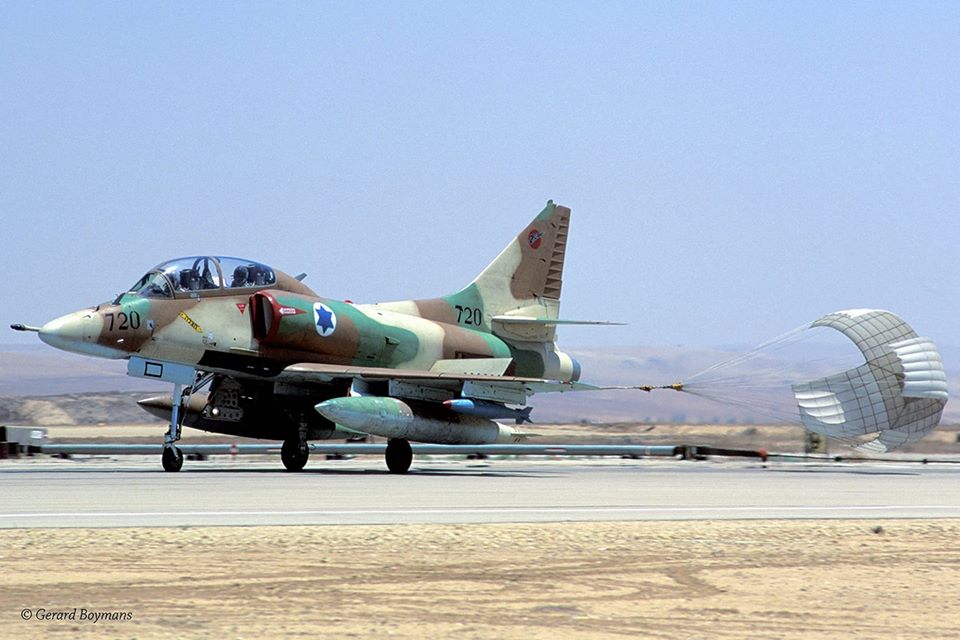
TA-4J(H) number 20 during landing with the break chute open. Note the training bomb on the outer pylon based on a 250 lbs Mk.81 bomb.
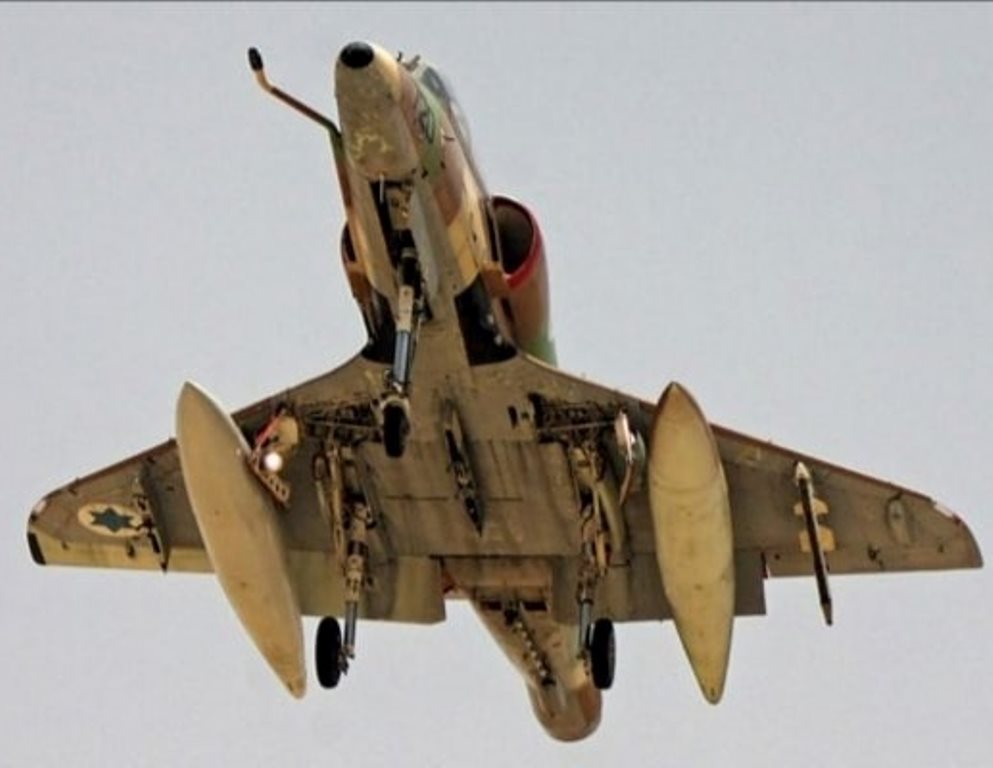
An underside shot of TA-4J(H) number 720. Note the AN/ALE-29A countermeasure blocks in front of the landing hook as well as the missile rail on the outer pylon.
Having all arrived after the Yom Kippur War none of the TA-4J(H)s were ever used in combat, instead spending all of their service career as dedicated advanced flight trainers. Notably some TA-4J(H)s did not posses cannon armaments while others retained the pair of 20mm Colt Mk.12 cannons.
In 2004 The TA-4J(H)s, as well as the TA-4Js, TA-4Hs and A-4Ns, were refurbished under a program called “Ayit Meshupar” (Improved Ayit). This refurbishment saw the aircraft being modernized with a new HUD made by VECTOP, an improved GPS based navigation system and a modern mission and fire control computer. The TA-4J(H)s continued their service as trainers with these modernizations until the 13th of December 2015 when all Skyhawks that were still in service were retired. Today some retired TA-4J(H)s still remain in Israeli Air Force bases grounds, such as TA-4J(H) number 25 (725 with the prefix) which remains in Uvda air base.
These photos show TA-4J number 04 and TA-4J(H) number 45 after they had been upgraded to “Ayit Meshupar” standard. Note that both aircraft are seen carrying AIM-9P3 Sidewinders which is a nonstandard missile for former US Navy aircraft to carry. This appears to be possible thanks to an adapter that can be seen between the missile rail and the hardpoint. Also note that TA-4J number 04 completely lacks cannons at this point while TA-4J(H) number 45 retained it’s cannons.
This photo in which TA-4J(H) number 45 is located just behind TA-4J number 23 is useful for comparing the different vertical stabilizer design between the two production models. Note how the TA-4J(H)'s vertical stabilizer is more squared at the top while the TA-4J’s is more rounded.

Specifications
Type: Tandem Seat Trainer/Attack Aircraft
Country of origin: USA
Wing span: 8.38 meters
Length: 12.98 meters
Height: 4.76 meters
Powerplant: Pratt and Whitney J-52-P-8A rated at 4,218 kgf
Max speed: 1,085 km/h
Max altitude: 13,200 meters
Range: 2494 km
Weight: Empty - 4,993 kg, Fully loaded - 11,113 kg
Armaments: 2x20mm Colt Mk.12 cannons (100 round per gun for a total of 200), Mk.80 series bombs (including ones with Snakeye kits), M117 bombs, FFAR Might Mouse rockets, Zuni rockets, 20mm Mark 11 mod 5 cannon-pods, Mk.77 Incendiary bombs, AIM-9P3 Sidewinders (only seen on airframes upgraded to Ayit Meshupar standard).
Avionics:
- Refueling Probe
- APG-53A Radar (Provisional)
- ASN-41 Nav computer (Provisional)
- ARC-51A UHF Comm
- ARR-69 UHF AUX Rec
- APX-72 Radar IFF
- APN-153 Doppler Navigation Radar (Provisional)
- TACAN ARN-52
- ARA-50 ADF (UHF)
- ARN-141 Radar Altimeter
- AN/AJB-3A LABS and CP-741 Weapon Delivery Systems (CCRP) (Provisional)
- Provisions for JATO (Jet Assisted Takeoff) boosters
- A pair of AN/ALE-29A countermeasure blocks housing together 60 charges
- Brake Chute
Additional photos
Sources
Spoiler
Israeli A-4 Skyhawk Units in Combat (Combat Aircraft, 81): Aloni, Shlomo, Laurier, Jim: 9781846034305: Amazon.com: Books
סקייהוק - מרקיע שחקים
IDF/AF A-4 Skyhawk Facebook group
מטוסי חיל האויר מהטייגר מות' עד הסופה
Air War on the Edge: A History of the Israel Air Force and It's Aircraft Since 1947: Norton, Bill: 9781857800883: Amazon.com: Books
McDonnell Douglas - TA-4F & TA-4J Two-Seater Skyhawks - REPORT MDC-J4176 May 1st 1972
Standard Aircraft Characteristics Navy Model TA-4F Aircraft NAVAIR 00-110AA4-7
Supplement to NATOPS Flight Manual Navy Model A-4E/F International Model A-4K aircraft NAVAIR 01-40AVK-1
